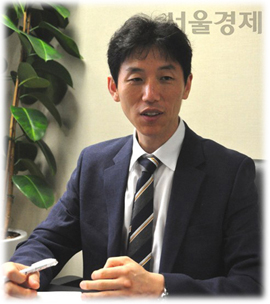| 일 | 월 | 화 | 수 | 목 | 금 | 토 |
|---|---|---|---|---|---|---|
| 1 | 2 | 3 | 4 | 5 | ||
| 6 | 7 | 8 | 9 | 10 | 11 | 12 |
| 13 | 14 | 15 | 16 | 17 | 18 | 19 |
| 20 | 21 | 22 | 23 | 24 | 25 | 26 |
| 27 | 28 | 29 | 30 | 31 |
- Value Systems
- Samjae Capacities
- political organization
- Canonical Politics
- Political Regime
- politics and war
- politics
- Political Regimes
- 1st Law of politics
- Orderliness of Choice
- politics of Inner Circle
- political phenomena
- Power
- power and organization
- Mathematical Model of political science
- new political science
- Political power
- the 3rd Law of politics
- Order of Choice
- Task Delegates of the Ruler: Inner Circle
- Differences in Individual Abilities and Tendencies
- Operation of the 2nd Law
- Regime Change
- survival process theory
- Cohesion Force
- mechanism of politics
- the 2nd law
- Samjae Capacity
- Mathematical Model of politics
- Political Change
- Today
- Total
New Political Science
C. (1) Intuitive Explanation Through Diagrams 본문
C. (1) Intuitive Explanation Through Diagrams
Political Science 2023. 12. 14. 02:27C. The 3rd Law: The Law of Political Change
(1) Intuitive Explanation Through Diagrams
a. Basic Concept
The 3rd law of Political Phenomena is a law that explains the "temporal changes in power structure" of political phenomena. Its content is as follows:
[Ch.3.301] The power structure is a rule system, and the changes in this ㉠ rule system occur when the ㉡ profit equilibrium condition changes, and when the ㉢ regime change force surpasses the ㉣ regime change cost and ㉤ repression force.
The power relation, which is the core of the political phenomenon, changes as each political actor's size of political capacity and cohesion force between them change[Ch.2.A.3.4]. The 3rd law explains the temporal aspect of these changes. That is, the size and intensity of power change over time, and the power structure (or political regime) that is determined by their overall sum also changes accordingly.
The change in power structure is a change in power relations between political actors. That is, by applying changes in power relations between two political members, a and b, to all relationships within an organization, we can explain the change in power structure (political regime, R). While it may not explain everything about the political regime and power phenomenon, it can explain the most important part. For example, if the political capacity of a remains the same, but the political capacity of b significantly increases and the political capacity of c significantly decreases, then the power relations between a and b, a and c, and b and c will all change. As a result, the political regime composed of a, b and c will have changed.
So, what are the factors that cause changes in the political capacity of individual political actors such as a and b? To intuitively understand this, let me first provide an example of a simple PKB group.
Let me consider a situation where three individuals, Peter, Kevin, and Ben, experience a change. For instance, they may have felt threatened by a wolf in the mountains initially, but are now lost and starving. This change also affects their cooperative relationship (㉠ rule system). The three people who had been cooperating with brave Peter at the center must now shift their focus to the food collection and securing abilities of excellent Kevin. Otherwise, even if the three friends work hard, they cannot solve their hunger problem (A change in ㉡profit equilibrium condition). Consequently, people suggest that they should focus on securing food rather than dealing with the wolf (㉢regime change force). However, if they abruptly try to make such changes, mistakes may occur due to previous habits (㉣regime change cost), and Peter, who had been the leader, may also express resistance (㉤repression force). Nevertheless, as the threat of the wolf gradually fades and hunger intensifies, people feel the need and eventually change their cooperative relationship to center on Kevin. The 3rd law generalizes these relationships to all scales of political phenomena.
If I represent this in a diagram, it would look like [Diag.3.C.1].

In this diagram, the cooperative relationship centered on Peter is R, and the cooperative relationship centered on Kevin is R*. That is, a political regime R has changed over time to R*. Now, it is necessary to analyze more detailed factors that determine such political regime changes.
'Mechanism of Politics' 카테고리의 다른 글
| a. ㉡ Schematic Understanding of the 3rd Law (0) | 2023.12.14 |
|---|---|
| a. ㉠ Detailed Content of the 3rd Law (0) | 2023.12.14 |
| c. Mathematical Model and Implications of the 2nd Law (0) | 2023.12.14 |
| b. Interrelationships of Variables of Cohesion Force (0) | 2023.12.14 |
| (3) a. Mathematical Model of Internal Cohesion (0) | 2023.12.14 |



